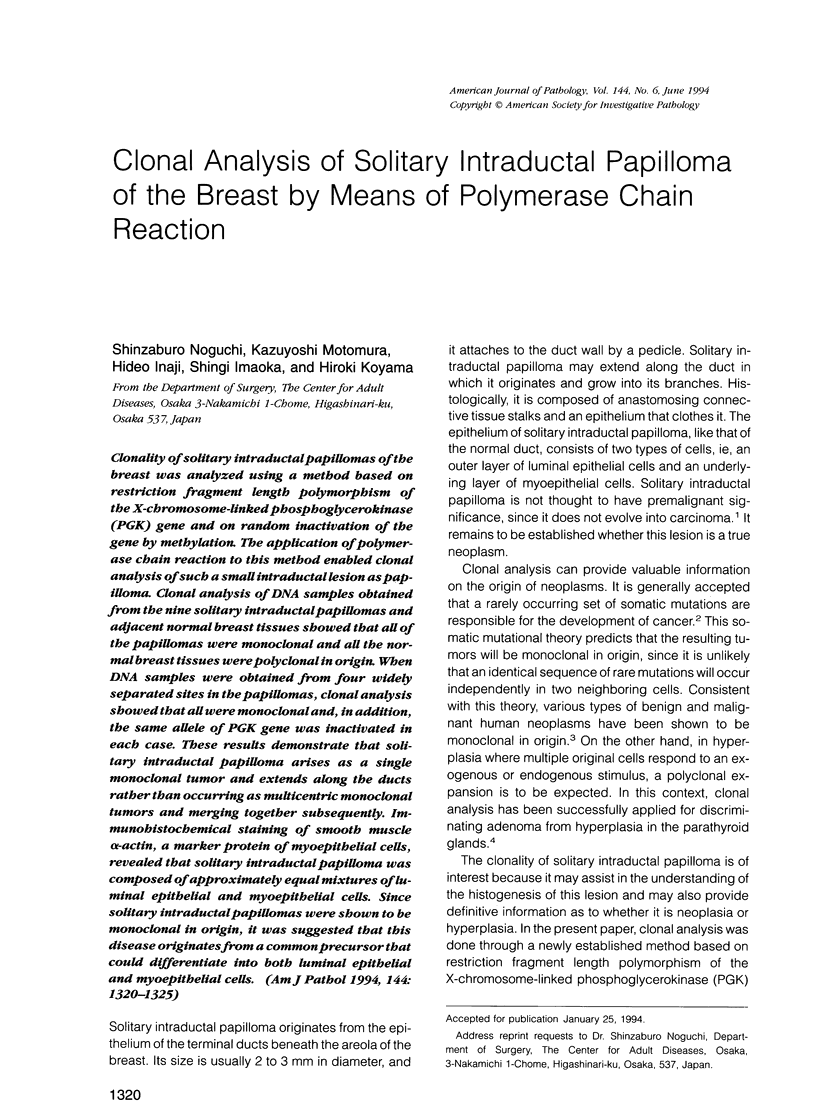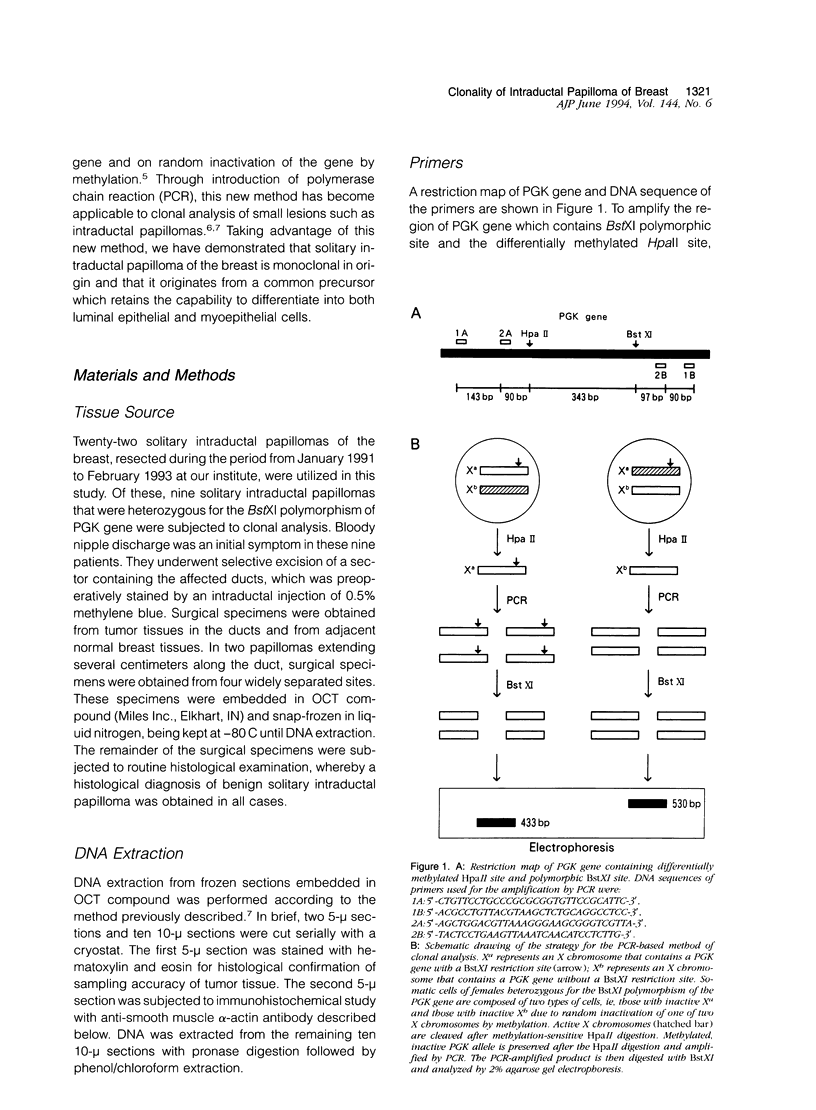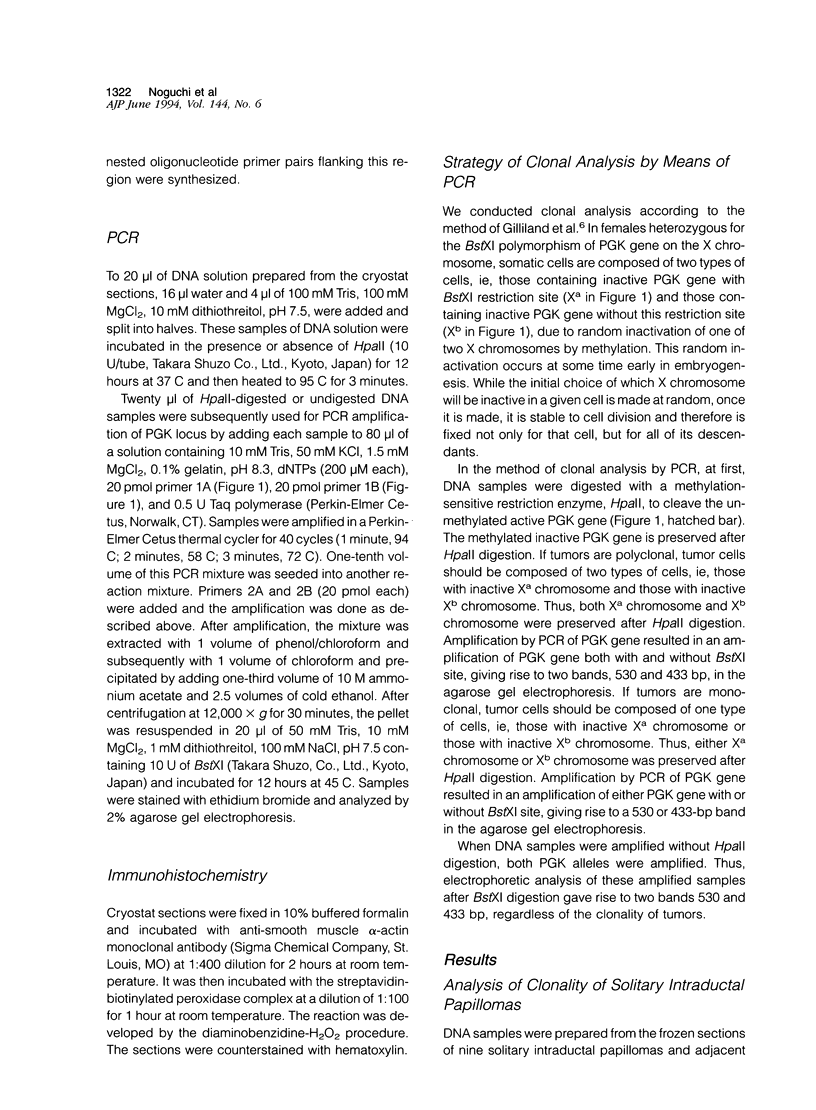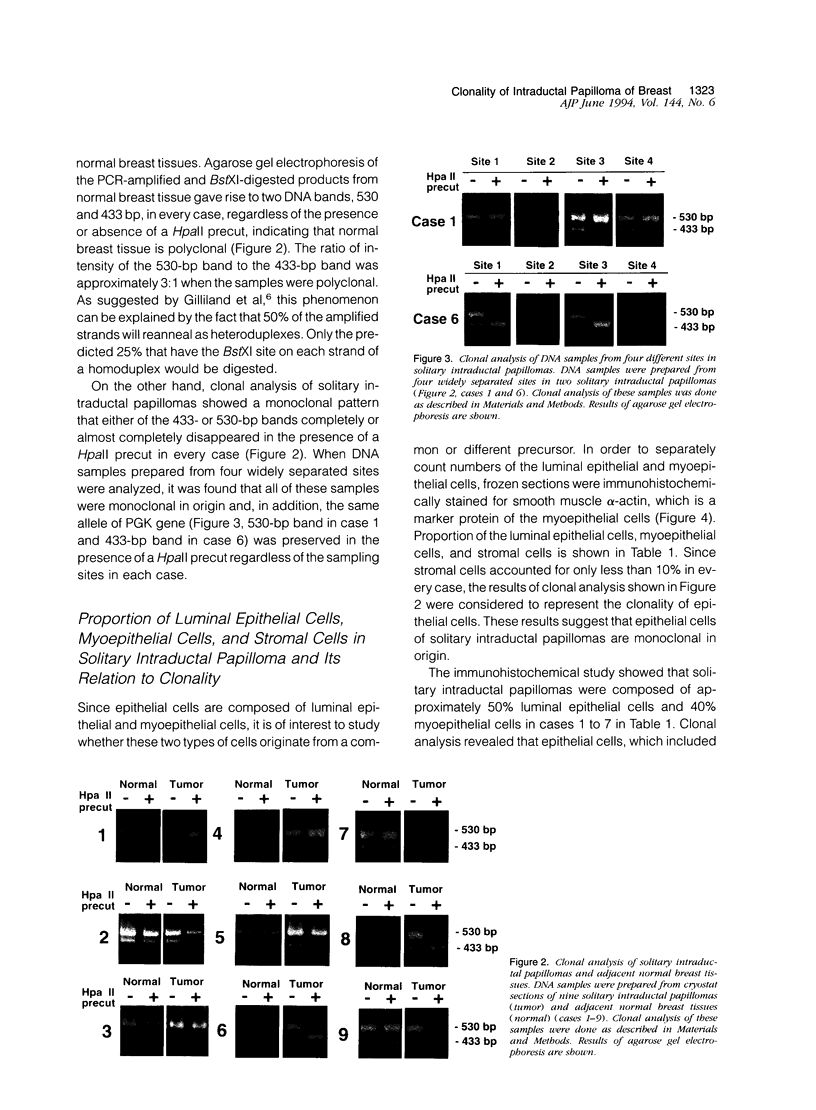Abstract
Clonality of solitary intraductal papillomas of the breast was analyzed using a method based on restriction fragment length polymorphism of the X-chromosome-linked phosphoglycerokinase (PGK) gene and on random inactivation of the gene by methylation. The application of polymerase chain reaction to this method enabled clonal analysis of such a small intraductal lesion as papilloma. Clonal analysis of DNA samples obtained from the nine solitary intraductal papillomas and adjacent normal breast tissues showed that all of the papillomas were monoclonal and all the normal breast tissues were polyclonal in origin. When DNA samples were obtained from four widely separated sites in the papillomas, clonal analysis showed that all were monoclonal and, in addition, the same allele of PGK gene was inactivated in each case. These results demonstrate that solitary intraductal papilloma arises as a single monoclonal tumor and extends along the ducts rather than occurring as multicentric monoclonal tumors and merging together subsequently. Immunohistochemical staining of smooth muscle alpha-actin, a marker protein of myoepithelial cells, revealed that solitary intraductal papilloma was composed of approximately equal mixtures of luminal epithelial and myoepithelial cells. Since solitary intraductal papillomas were shown to be monoclonal in origin, it was suggested that this disease originates from a common precursor that could differentiate into both luminal epithelial and myoepithelial cells.
Full text
PDF





Images in this article
Selected References
These references are in PubMed. This may not be the complete list of references from this article.
- Arnold A., Staunton C. E., Kim H. G., Gaz R. D., Kronenberg H. M. Monoclonality and abnormal parathyroid hormone genes in parathyroid adenomas. N Engl J Med. 1988 Mar 17;318(11):658–662. doi: 10.1056/NEJM198803173181102. [DOI] [PubMed] [Google Scholar]
- Fialkow P. J. Clonal origin of human tumors. Biochim Biophys Acta. 1976 Oct 12;458(3):283–321. doi: 10.1016/0304-419x(76)90003-2. [DOI] [PubMed] [Google Scholar]
- Gilliland D. G., Blanchard K. L., Levy J., Perrin S., Bunn H. F. Clonality in myeloproliferative disorders: analysis by means of the polymerase chain reaction. Proc Natl Acad Sci U S A. 1991 Aug 1;88(15):6848–6852. doi: 10.1073/pnas.88.15.6848. [DOI] [PMC free article] [PubMed] [Google Scholar]
- Noguchi S., Motomura K., Inaji H., Imaoka S., Koyama H. Clonal analysis of human breast cancer by means of the polymerase chain reaction. Cancer Res. 1992 Dec 1;52(23):6594–6597. [PubMed] [Google Scholar]
- Rudland P. S., Bennett D. C., Warburton M. J. Isolation and characterization of epithelial stem-cell cell lines from the rat mammary gland. Br J Cancer. 1980 Apr;41(4):666–668. doi: 10.1038/bjc.1980.119. [DOI] [PMC free article] [PubMed] [Google Scholar]
- Smith C. A., Monaghan P., Neville A. M. Basal clear cells of the normal human breast. Virchows Arch A Pathol Anat Histopathol. 1984;402(3):319–329. doi: 10.1007/BF00695085. [DOI] [PubMed] [Google Scholar]
- Vogelstein B., Fearon E. R., Hamilton S. R., Feinberg A. P. Use of restriction fragment length polymorphisms to determine the clonal origin of human tumors. Science. 1985 Feb 8;227(4687):642–645. doi: 10.1126/science.2982210. [DOI] [PubMed] [Google Scholar]





